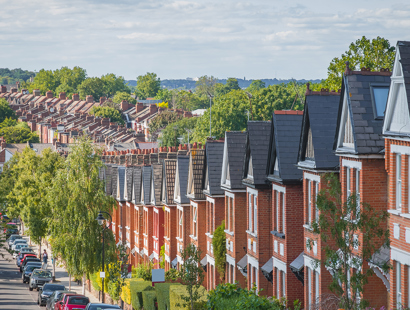
M&S Oxford Street redevelopment—embodied carbon from demolition key reason for refusal
Following an extensive inquiry, the Secretary of State has refused M&S planning permission to demolish and redevelop their Oxford Street building.
Michael Gove’s decision will have ramifications on planning applications across the country as embodied carbon is becoming an important consideration and re-use a priority as increasing numbers of local plans include policies engaging with the same.
What were the details of the decision?
In June 2021 M&S submitted a planning application to demolish their flagship building on Oxford Street and construct a 10-storey development comprising a revamped store, offices and a pedestrian arcade. Westminster City Council granted the application but public outcry for the loss of Orchard House resulted in the application being called-in for determination by the Secretary of State for Levelling Up, Housing and Communities.
Gove overturned the council’s decision and rejected the planning application.
What was the basis of Gove’s decision?
The Secretary of State’s decision was based on three key concerns:
- The impact on heritage assets.
- The associated embodied carbon from demolition versus refurbishment.
- Whether the public benefit outweighed the adverse impact on heritage assets and the extent of embodied carbon.
Although the M&S building is not itself listed, its proximity to several listed buildings and Conservation Areas was also a crucial factor in the decision as the protection of heritage assets extends to the assets’ surrounding area. The development was predicted to damage the setting of heritage assets such as the Grade II* listed Selfridges building and this threat was given ‘significant weight’ in the decision-making process.
The planning application was also rejected as the extent of embodied carbon produced by the demolition and replacement was calculated to be greater than if the existing property was re-used and refurbished. Gove placed great emphasis on reducing embodied carbon, arguing that the proposal was contrary to paragraph 152 of the National Planning Policy Framework (‘NPPF’) in that it would fail to ‘support the transition to a low carbon future’ or ‘encourage the reuse of existing resources, including the conversion of existing buildings’. Notably, M&S argued that over its entire operational life the redevelopment would be less carbon intensive, but ultimately it was decided that the tools for calculating this impact were too rudimentary to be relied upon.
Although Gove recognised the significant public benefits the redevelopment would bring, such as generating employment and improving both the shopping experience and the public realm, he concluded on balance that the benefits did not outweigh the harm in respect of designated heritage assets and the UK’s transition to a net zero economy.
What are the wider implications of this decision?
Although the impact on heritage assets eventually trumped the sustainability arguments, Gove’s consideration of embodied carbon will have a much bigger impact on other planning applications.
The decision produces a whole new set of hurdles for developers seeking planning permission.
Developers can no longer take for granted that their applications for wholescale redevelopment will be approved, and applicants must consider including:
- a whole-life carbon impact assessment (calculate using the most up-to-date tools);
- evidence that reasonable alternatives to redevelopment such as refurbishment have been considered; and
- proof that such alternatives are neither deliverable nor appropriate.
This is all in addition to designing a development with exceptional green credentials.
At the same time, Gove warned against applying his decision too widely. A strong reason was only required to justify demolition in the M&S case due to factors such as the importance of optimising the site, the structure of the building itself and the accessibility levels of the location. For sites that are more remote and buildings that are less structurally sound, the requirements listed above may well not be of such determinative weight.
It is also important to note that sustainability expectations do vary across planning authorities although there is a strong direction of travel and any new local plan now always has increasingly detailed policies on such issues.
What is the future of embodied carbon as a factor in planning applications?
The importance of embodied carbon impacts as a factor in planning decisions is only going to increase. The Government has committed to reviewing and updating the NPPF, to standardising the measurement and reduction of embodied carbon in developments and to considering placing a carbon tax on higher carbon imported products. As each of these initiatives is implemented, the standard for justifying demolition and redevelopment will only rise.
Get in touch
If you would like to speak with a member of the team you can contact our real estate planning and construction solicitors; Holborn office (Email Holborn) +44 (0)20 3826 7523; Kingston office (Email Kingston) +44 (0)20 3826 7518; Putney office (Email Putney) +44 (0)20 3826 7518 or complete our form.


